Webinar: How to Automate Supply Chain Processes with RFID

About this Webinar
How to Automate Supply Chain Processes with RFID
Thursday, February 22 1:00 – 1:45pm CT
Presented by:
Tom O’Boyle, Principal RFID Solutions Architect, Levata
John Cooke, Director of Software Development, Smart Label Solutions (SLS)
Easily Scale RFID Technology with SLS Integration
RFID is revolutionizing shipping and receiving in a more scalable fashion than ever before. Purpose-built RFID solutions are improving order to delivery time and shipment accuracy across the supply chain while reducing labor intensive manual counting.
Watch this 30-minute webinar and discover the advantages of RFID for your organization:
- How to improve your supply chain visibility by automating your shipping and receiving functions using RFID through improved read accuracy to the item level and sub-second event alarming
- Why using professional grade software is an essential component of your RFID Solution, providing real-time visibility into the movement of assets and products, whether that be at a dock door, a tunnel or with a mobile device
- How RFID is easy to scale and deploy through rapid plug and play integration
How RFID Increases Shipment Accuracy
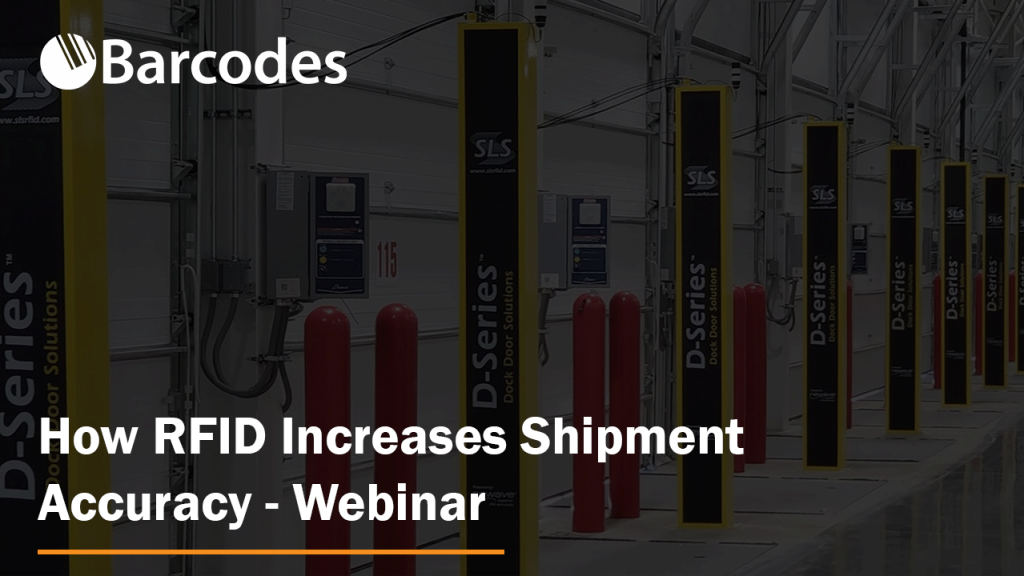
Webinar Details
How RFID Increases Shipment Accuracy
Thursday June 8th
1:00pm – 1:45pm Central
Presented By
Tom O’Boyle – Principal RFID Solutions Architect – Barcodes Group
Nat Hillary – Solutions Engineer for Strategic Accounts, Impinj
Why RFID?
Shipments sent to the wrong location, missing items, or containing the wrong items cost time, money and erode customer trust.
Placed on points of transition, RFID technology can identify thousands of items per second, and is capable of achieving a read accuracy above 99% percent.
And it delivers powerful insights into traffic patterns and service level metrics to further optimize your operations.
Discover the Advantages of RFID for Your Organization:
- Automate tracking of shipments moving in and out of dock doors without direct line-of-sight, reducing the need for human intervention and manual scanning
- Read tags on pallets, cases, or items
- Alert teams when a shipment is incomplete, contains the wrong items, or is loaded on the wrong truck
- Experience repeatability and scalability with an easy installation process (no matter the size of your business)
That means RFID tags placed on individual items, pallets, or containers will be read accurately to ensure that the right goods are on the right truck – every time.
Watch the Full RFID Webinar Recording
RFID Webinar: Improve Returnable Container Tracking with RFID
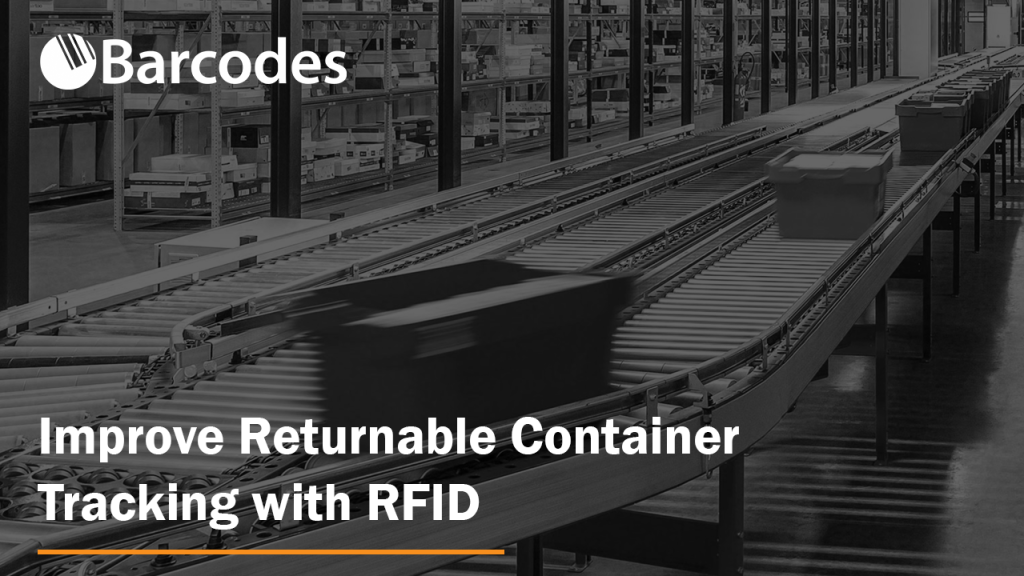
Webinar
Improve Returnable Container Tracking with RFID
Thursday April 20th 1:00-1:45pm Central
PRESENTED BY:
Christopher Vassilos – Senior Solutions Architect, Barcodes Group
Michael Daily – Senior Solutions Engineer, Impinj
RFID-Based Container Tracking
Upon delivery, it’s common for reusable containers to not be returned to the sender, with annual shrinkage rates often exceeding 10%. Keeping track of your Returnable Transport Items (RTIs) can be challenging, especially when logging their location depends on manual processes like scanning.
In this webinar, discover the benefits of RFID-based container tracking:
- Reduce the number of misplaced pallets, kegs, and boxes. Less new delivery assets need to be purchased, and shipments are not interrupted due to lack of totes.
- Track each asset as it leaves and returns to the warehouse, allowing you to determine its exact location immediately and whether they have yet to return.
- Calculate the flow of returnable assets to fully understand your shipping capacity for the present and future.
- Improve utilization of workers since it takes way less time to scan RFID tags than barcodes, due to its fully automatable reading without line-of-sight requirements.
Watch the Full RFID Webinar Recording
Improve Returnable Container Tracking with RFID

Returnable Transfer Items (RTIs), or returnable containers are critical assets for almost all manufacturing and logistics organizations. RTIs transport stock and commodities from one site to another. However, keeping track of your RTIs is a different story. Well-known manufacturers and logistics expert still often rely on manual methods, such as traditional scanning, spreadsheet, or pen and paper.
This leads to a major issue: inventory shrinkage.

Mismanagement of returnable containers owing to theft, unrecorded damage, or simply the inability of consumers to return empty pallets, kegs, and boxes costs a fortune.
How are Your Returnable Transfer Items Being Tracked Currently?
Barcode labels used to tag the cargo of a container during shipment are often non-permanent. Traditional barcode scanners and labels identify the contents of the container, but seldom provide reverse logistics tracking for the containers themselves.
Using permanent barcode labels as the foundation for a container monitoring system is not feasible. I know that might be strange to hear from a company called Barcodes, Inc. But scanning labels at various stages of the supply chain sometimes necessitates extra human effort, which is even more difficult when empty containers pile up.
One solution is to establish a tracking system utilizing modern asset tracking technology.
Reducing Yearly Inventory Shrinkage with RFID
“15% of all pallets in circulation vanish” or “20% of all packaging/equipment is lost owing to consumers retaining them for their own use or third parties removing them for their own use.”
SLS RFID 2016 Study
Inventory shrinkage is a major issue in the management of returnable transfer items (RTIs), which include all types of shipping containers, packaging, pallets, kegs, and boxes.
Shrinkage due to theft, unreported damage, or just consumers failing to return empty containers is a serious concern in this field.
Estimated annual shrinkage rates are anywhere from 3 to 9%. If you’re constantly replacing lost or stolen RTIs, the impact on profitability is a huge problem.
For organizations to decrease RTI shrinkage, RFID is appealing due to completely automated scanning without line-of-sight, as well as mass tag reading. The key advantage of RFID-based container monitoring systems is an improvement in container return rates. New containers are purchased in smaller batches and less frequently.
What Data Can Be Tracked with RFID Tags?
Integrating the RFiD Discovery system with your ERP system enables company-wide visibility of your RTIs, ensuring that essential assets are accessible at the relevant locations to fulfill any transportation request.
Exactly what the RFID ultimately tracks depends on your unique tracking requirements. Here are some examples of the depth of data you can store in a small RFID tag:
- Container Name
- Size
- Location
- Weight
- Item Quantity
- Container Properties
User memory on tags stores data. The serial number field can be pre-programmed or user-assigned.
The air-interface protocol standards for passive HF and UHF tags, such as UHF EPC Gen 2, define basic functions like read-write and which memory banks or blocks can be written to. Reader manufacturers include these low-level commands with higher-level subroutines in their software development kits for application developers.
How to Use RFID to Tag RTIs
RFID labels are long-lasting and more durable than traditional labels. RFID tags attach exceptionally well to returnable cargo and resist machine washing operations as well as harsh elements for much longer.
Any RTI equipped with an RFID tag can be detected by a small number of strategically located readers. The location data is delivered back to the central RFID Discovery database, where it may be evaluated.
This database allows you to discover how many RTIs have been sent to a specific supplier or customer, so you know which trade partner to approach when requesting a return.
When shipping containers are in range of an RFID reader, the information on the tags can be automatically acquired using a wide variety of methods:
- Fixed reader installed at a warehouse entrance or loading dock
- A mobile reader installed on a forklift
- Handheld reader brought inside a business partner’s facility for rapid inventory
What are the Main Advantages of Using RFID for Returnable Asset Tracking?
There are several advantages of using RFID to track returnable assets.
1. Recoup Billions of Dollars in RTI-Related Losses
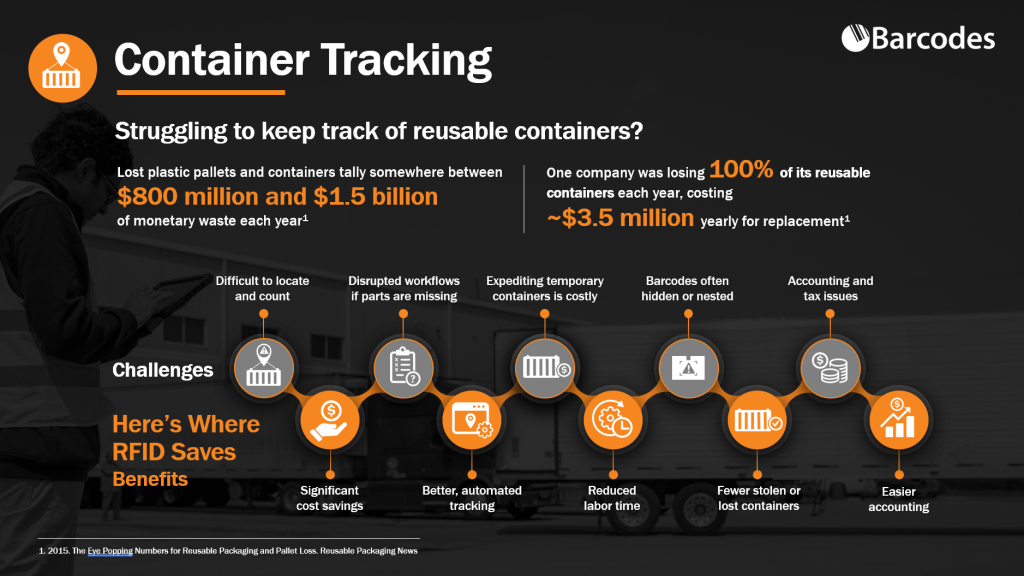
Reusable assets are returned to the sender after delivery, usually full of new goods and not empty. Entire industries are dedicated to capitalizing on reverse logistics and maximizing the value of containers.
So why do we pay far less attention to reusable assets compared to sold commodities and container space? In order to get a bird’s eye view of costly shrinkage areas, your immediate shipping capacity, and overall supply chain health, it’s critical to assess the flow of returnable assets as well.
If RTIs arrive in the incorrect place or are lost, the transfer of products becomes difficult or impossible, thereby causing delivery delays. And massive container replacement costs.
These misplaced assets represent billions of dollars in losses, since new delivery assets must be acquired. We will say again: RFID saves billions of dollars.
2. Track Every Asset Location With a Detailed Evidence Trail
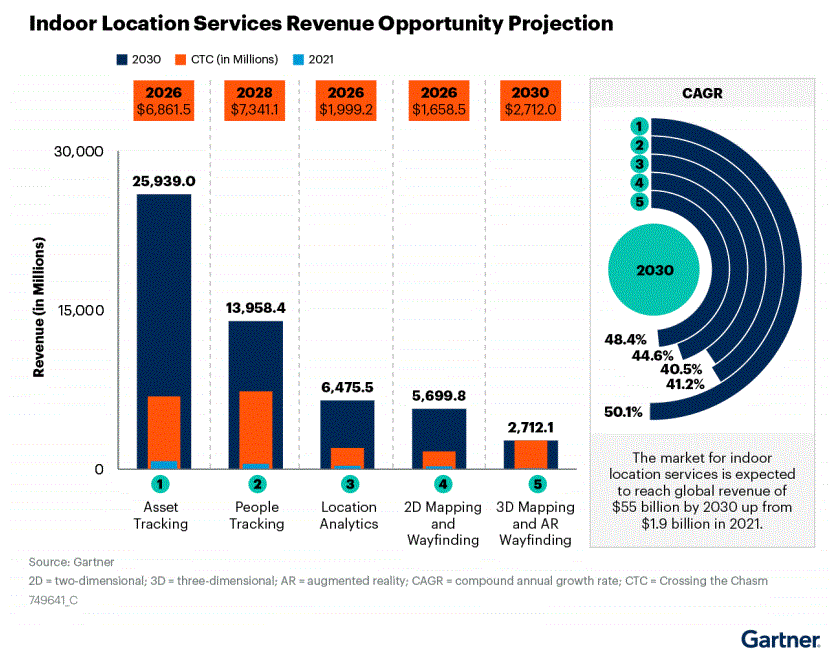
While we like to imagine most people are honest and good by nature, the reality is that customers and suppliers are not going to eager to assist when the subject of locating your missing valuables is brought up. Tough luck.
Instead of playing the blame game, utilizing an RFID system to track each asset as it leaves and returns to the warehouse allows you to instantly establish its specific location, and whether it has yet to return.
This goes for both goods sold as well as the RTIs carrying them. Put another way, your returnables are much more likely to return.
3. Increase Visibility of Container Locations, Available Stock, and Overall Condition
Though shipping should be a precise science, we know that’s not always the case.

Businesses depend on RTIs everyday, but lack visibility over the availability, location, and quality of their RTIs.
When organizations incorporate careful pallet monitoring, tote box tracking, and stillage tracking, it’s much easier to manage a large pool of RTIs without bleeding money. Additionally, there is no longer a need to keep just-in-case containers on the sidelines, because of increased visibility into the “who, what, where, and how many?” questions.
4. Improve Labor Utilization at Every Level of the Supply Chain
Scanning RFID tags takes substantially less time than scanning barcodes. Similarly, RFID is a more appealing identifying solution for reusable assets since users do not need to manufacture new barcodes or print new labels.
Logistics and operational leaders can simply re-encode the same RFID tags again and again without increasing headcount or allocating redundant processes to busy workers.
Lastly, RTLS on RFID can significantly reduce the amount of time workers spend searching for specific inventory. In a field such as healthcare, nurses estimate they spend at least an hour per shift finding equipment. That really adds up when looking at overall labor utilization.
Evaluating and Deploying an Effective RTI Tracking System
Tracking RTIs with RFID helps prevent your assets getting lost or stolen, reduces disputes between trading partners, enables rapid inventory cycle counting, and quickly identifies shortages. Your organization could be saving billions of dollars.
Barcodes, Inc. is your trusted RFID partner and integrator. Contact us when you are ready to elevate your RTI management and discover the magic of RFID tracking. It’s easier to deploy with a partner you can trust.
Stages of a Successful RFID Deployment – Webinar

Webinar
Stages of a Successful RFID Deployment: From Discovery to Implementation
Thursday, October 27th, 2:00 PM – 2:30 PM ET
Presented By
Christopher Vassilos – Senior Solutions Architect, Barcodes Group
Nat Hillary – Solutions Engineer for Strategic Accounts, Impinj
About this RFID Webinar
Nearly 80% of attendees to our RFID webinars have not implemented the technology yet but are interested in exploring this. How do you determine if RFID is right for you and what steps are part of a deployment?
During this webinar, you will learn the answers to the following questions:
- Based on your unique needs, how do you determine if RFID can improve the flow of goods and inventory accuracy, and at what cost?
- Does RFID fit your organization considering your people, processes, and technology?
- How do you test reading RFID tags at your facility?
Watch the Full RFID Webinar Recording
Interested to learn more about our RFID deployment solutions and services? Contact us today for a consultation and see if it’s the right fit for your organization.
Retail Stores are Being Revolutionized with the Help of RFID
 Radio Frequency Identification (RFID) are helping retail stores across the country improving customer experience, inventory accuracy, and a way to present wider sets of products to customers who are a little more selective.
Radio Frequency Identification (RFID) are helping retail stores across the country improving customer experience, inventory accuracy, and a way to present wider sets of products to customers who are a little more selective.
RFID Tags have the ability to hold information that identifies the products, its country of origin, materials used, production date, the handling process, and any other important information that took place in the supply chain. Some retailers are using RFID tagging to track products at all of their locations. According to a research study from the RFID Lab at Auburn University, RFID tagging can increase inventory accuracy from an average of 63 percent to greater than 95 percent. This helps enable speed and accuracy for consumers concerning fulfillment for two-day, one-day, or same day delivery. According to Kurt Salmon and the Platt Retail Institute, with RFID tagging, out of stocks can be reduced by up to 40 percent and increase profit margins by 60 percent.
According to the RFID Lab, manufacturers using RFID tagging will see an 80 percent improvement in shipping and picking accuracy, at the same time being able to increase the receiving time by 90 percent. This will allow retailers to communicate more efficiently with their manufacturers for expedited reorders, improved planning, and forecasting of products.
To read more about how RFIDs can help retail stores click here.
For any questions or a quote on any of your RFID needs contact us at Barcodes, Inc.
RFID Tags Made to Monitor Vital Signs
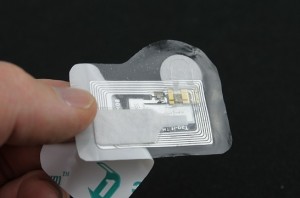 The possibility of being able to continuously monitor a person’s vital signs to detect early warnings on potential abnormalities is coming. All thanks to researchers at Cornell University that have been working on a new project. For this to really get off the ground it’ll have to be as noninvasive as possible with no interference of wires and electrodes. With RFID technology that’ll be possible. Researchers have created a new touch free monitoring system that’ll be able to monitor an individual’s breathing, heart rate, and blood pressure all with a RFID Tag small enough to fit in someone’s shirt pocket.
The possibility of being able to continuously monitor a person’s vital signs to detect early warnings on potential abnormalities is coming. All thanks to researchers at Cornell University that have been working on a new project. For this to really get off the ground it’ll have to be as noninvasive as possible with no interference of wires and electrodes. With RFID technology that’ll be possible. Researchers have created a new touch free monitoring system that’ll be able to monitor an individual’s breathing, heart rate, and blood pressure all with a RFID Tag small enough to fit in someone’s shirt pocket.
A professor of electrical and computer engineering at Cornell University, Edwin Kan and graduate student Xiaonan Hui developed the technology. Their method relies on near-field coupling. Near-field is the region of the electromagnetic field right around an RFID Antenna with a distance of up to 35 centimeters, or one wavelength, away. Kan and Hui’s demonstrations were able to pick up an individuals’ blood pressure, heart rate, and breathing measures with a high level of accuracy. All of it was possible using a small RFID antenna and RFID tag placed within 10 centimeters of an individuals’ body, and a RFID Reader located up to two meters away. According to Hui this method increases the sensitivity and the signal quality.
In the long term there could be life changing uses that come from Kan and Hui’s research. “There are several potential real-world applications for this, such as the next generation wearable devices, smart garments, healthcare monitoring, and clinical studies,” Hui continued. “The convenience and the high performance could be particularly helpful for smart garments. Imagine if your daily garments were able to gather your vital signs directly, and then report them straight to your cell phone.”
In the short term Kan and Hui are interested in using this RFID technology in hospitals. It could be used to monitor a large number of patients without hooking them up to separate machines and devices to check their vitals. The study also showed that their system could detect up to 200 RFID tags at once, all over the same wireless communication channel.
To read more about Edwin Kan’s And Xiaonan Hui’s research, click here.
For any questions or a quote on any of your RFID needs contact us at Barcodes, Inc.
Honeywell’s 70 Series RFID Mobile Computers
 RFID has become the leading technology to improve your effectiveness of any tracking application from assets and inventory to receiving shipments. Empowering your workforce with RFID readers and tagged items they can accomplish more in less time with a higher degree of accuracy.
RFID has become the leading technology to improve your effectiveness of any tracking application from assets and inventory to receiving shipments. Empowering your workforce with RFID readers and tagged items they can accomplish more in less time with a higher degree of accuracy.
The Honeywell 70 Series RFID is the no-compromise, next generation family of ultra-rugged mobile computers that add passive UHF reading to the already impressive feature set of 70 Series devices. When it comes to accomplishing routine data collection tasks with greater efficiency and accuracy, the 70 Series RFID mobile computers are the answer. These devices combine advanced RFID reading and a no-compromise design with best-in-class ruggedness, battery life, and ergonomics. Intelligently designed into three different form factors yet built on a singular core platform, the 70 Series RFID gives you the benefits of specialized devices with the reduced complexity and cost savings that come from adopting a common platform.
The 70 Series RFID family is intelligently designed into three form factors:
With the aid of the 70 Series RFID readers you get the benefits of specialized devices with the reduced complexity and cost savings that come from adopting a common platform.
Ensuring RFID’s Bottomline Payoff
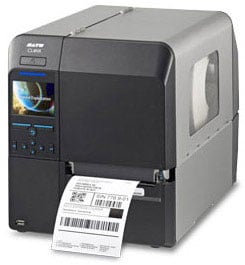 Whether a business leapt at the opportunity to become one of the first suppliers with RFID tagged products or now finds itself currently being mandated to employ the technology, the implementation costs and the potential rewards are the same.
Whether a business leapt at the opportunity to become one of the first suppliers with RFID tagged products or now finds itself currently being mandated to employ the technology, the implementation costs and the potential rewards are the same.
To maximize the benefits of RFID, it is critical to view its capability to drive business process improvement, increase supply chain efficiency and ultimately improve bottom line results. From this perspective, the up front capital costs for hardware, engineering consulting costs, opportunity costs, ongoing cost of tags and, in a manual environment, labor associated with the RFID tagging of products are deemed a necessary investment.
Rather than merely RFID tagging products to satisfy the requirements of their largest customers, companies can move from seeing RFID deployment as just the cost of doing business to an opportunity to enhance productivity and profitability. Understanding the impact of data collection and tracking as well as data integration is essential to RFID optimization.
Honeywell: The Smarter Choice for Thermal Printing Supplies
 Having some of the industries most popular and capable label printers goes hand-in-hand with premium supplies for them. From simple direct thermal shipping labels to rugged polyester labels for outdoor use, Honeywell has supplies to handle the requirements of the most demanding environments.
Having some of the industries most popular and capable label printers goes hand-in-hand with premium supplies for them. From simple direct thermal shipping labels to rugged polyester labels for outdoor use, Honeywell has supplies to handle the requirements of the most demanding environments.
Honeywell genuine labels, RFID tags, receipts and ribbons support a broad range of barcode printing applications in mild to harsh environments. While a wide variety of these are offered as take-from-stock products for fast delivery, Honeywell will also customize the label material, configuration, size or any other feature to meet even the most challenging environment. Whether an off-the-shelf or custom solution, Honeywell has media solutions to meet any unique requirement.
To learn more about Honeywell’s selection of labels, receipt paper, wristbands, and RFID tags, contact one of our media specialists at Barcodes Inc.




